
K2, at 8,611 metres (28,251 ft) above sea level, is the second-highest mountain on Earth, after Mount Everest at 8,849 metres (29,032 ft). It lies in the Karakoram range, partially in the Gilgit-Baltistan region of Pakistan-administered Kashmir and partially in the China-administered Trans-Karakoram Tract in the Taxkorgan Tajik Autonomous County of Xinjiang.
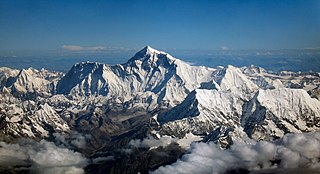
Mount Everest is Earth's highest mountain above sea level, located in the Mahalangur Himal sub-range of the Himalayas. The China–Nepal border runs across its summit point. Its elevation of 8,848.86 m was most recently established in 2020 by the Chinese and Nepali authorities.

The eight-thousanders are the 14 mountains recognised by the International Mountaineering and Climbing Federation (UIAA) as being more than 8,000 metres (26,247 ft) in height above sea level, and sufficiently independent of neighbouring peaks. There is no precise definition of the criteria used to assess independence, and at times, the UIAA has considered whether the list should be expanded to 20 mountain peaks by including the major satellite peaks of eight-thousanders. All of the eight-thousanders are located in the Himalayan and Karakoram mountain ranges in Asia, and their summits lie in an altitude known as the death zone.
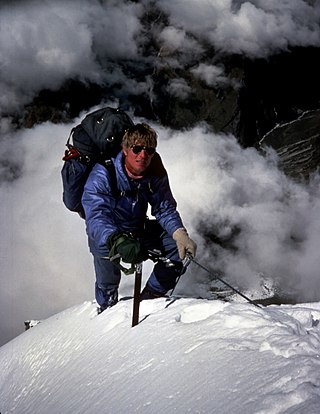
Scott Eugene Fischer was an American mountaineer and mountain guide. He was renowned for ascending the world's highest mountains without supplemental oxygen. Fischer and Wally Berg were the first Americans to summit Lhotse, the world's fourth highest peak. Fischer, Charley Mace, and Ed Viesturs summitted K2 without supplemental oxygen. Fischer first climbed Mount Everest in 1994 and later died during the 1996 blizzard on Everest while descending from the peak.

David Sharp was an English mountaineer who died near the summit of Mount Everest. His death caused controversy and debate because he was passed by a number of other climbers heading to and returning from the summit as he was dying, although a number of others tried to help him.
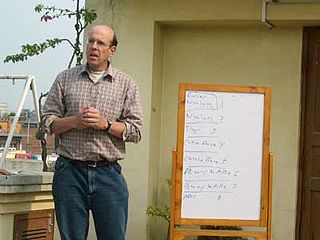
Daniel Lee Mazur is a mountain climber, expedition leader, and philanthropist who has ascended nine of the world's highest summits, including Mount Everest and K2. In addition, he is known for several high altitude mountain rescues: the 1991 rescue of Roman Giutashvili from Mount Everest, the rescue of Gary Ball from K2 in 1992, the rescue in 2006 of Australian climber Lincoln Hall from Mount Everest, and the rescue of British mountaineer Rick Allen from Broad Peak in 2018.
Arthur Karr Gilkey was an American geologist and mountaineer.
Liliane Barrard and Maurice Barrard were a French couple who gained fame climbing at high altitude, mainly in the Himalayan and Karakoram ranges, and emphasizing Alpine-style 'fast and light' ascents.
Peter Kittilsby Schoening was an American mountaineer. Schoening was one of two Americans to first successfully climb the Pakistani peak Gasherbrum I in 1958, along with Andrew Kauffman, and was one of the first to summit Mount Vinson in Antarctica in 1966.
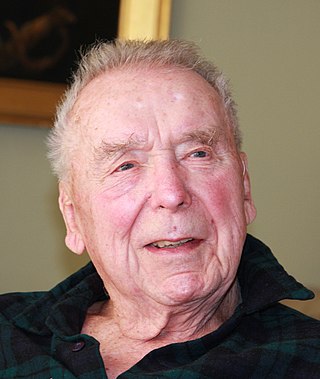
Charles Snead Houston was an American physician, mountaineer, high-altitude investigator, inventor, author, film-maker, and former Peace Corps administrator. He made two important and celebrated attempts to climb the mountain K2 in the Karakoram Range.
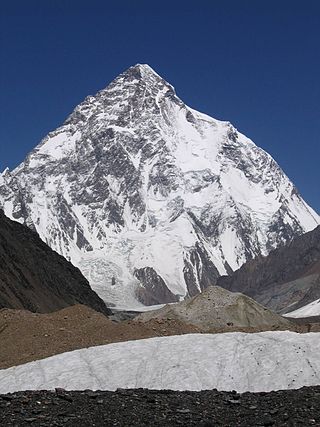
The 1953 American Karakoram expedition was a mountaineering expedition to K2, at 8,611 metres the second highest mountain on Earth. It was the fifth expedition to attempt K2, and the first since the Second World War. Led by Charles Houston, a mainly American team attempted the mountain's South-East Spur in a style which was unusually lightweight for the time. The team reached a high point of 7750 m, but were trapped by a storm in their high camp, where a team member, Art Gilkey, became seriously ill. A desperate retreat down the mountain followed, during which all but one of the climbers were nearly killed in a fall arrested by Pete Schoening, and Gilkey later died in an apparent avalanche. The expedition has been widely praised for the courage shown by the climbers in their attempt to save Gilkey, and for the team spirit and the bonds of friendship it fostered.
Robert Hicks Bates was an American mountaineer, author and teacher, who is best remembered for his parts in the first ascent of Mount Lucania and the American 1938 expedition and 1953 expedition to K2.
The David A. Sowles Memorial Award is the American Alpine Club's highest award for valour, bestowed at irregular intervals on mountaineers who have "distinguished themselves, with unselfish devotion at personal risk or sacrifice of a major objective, in going to the assistance of fellow climbers imperilled in the mountains." It is named after David A. Sowles, a climber who died in the Alps in 1963.

The 2008 K2 disaster occurred on 1 August 2008, when 11 mountaineers from international expeditions died on K2, the second-highest mountain on Earth. Three others were seriously injured. The series of deaths, over the course of the Friday ascent and Saturday descent, was the worst single accident in the history of K2 mountaineering. Some of the specific details remain uncertain, with different plausible scenarios having been given about different climbers' timing and actions, when reported later via survivors' eyewitness accounts or via radio communications of climbers who died later in the course of events on K2 that day.
Gerard McDonnell, mountaineer and engineer, was the first Irishman to reach the summit of K2, the second-highest mountain on Earth, in August 2008. He died along with 10 other mountaineers following an avalanche on the descent, in the deadliest accident in the history of K2 mountaineering.

The 1995 K2 disaster was a mountaineering disaster on K2 in Pakistan, the world's second highest mountain. Six people are reported to have died on August 13, 1995, on K2, largely related to bad weather, especially reported high winds. Scott Fischer was climbing Broad Peak at the time, and suggested that a contributing factor was combination of brutal cold and 160-kilometre-per-hour-plus (100 mph) winds.

Dudley Francis Cecil Wolfe was an American socialite. As a racing yacht owner and captain, he was the first person to race a sixty-foot yacht across the Atlantic, competing against much larger vessels. He was to inherit a large fortune from his maternal grandfather provided he changed his family name to "Smith", to which he agreed before reverting again. Wolfe became posthumously famous when he died on the 1939 American Karakoram expedition to K2 in controversial circumstances.












